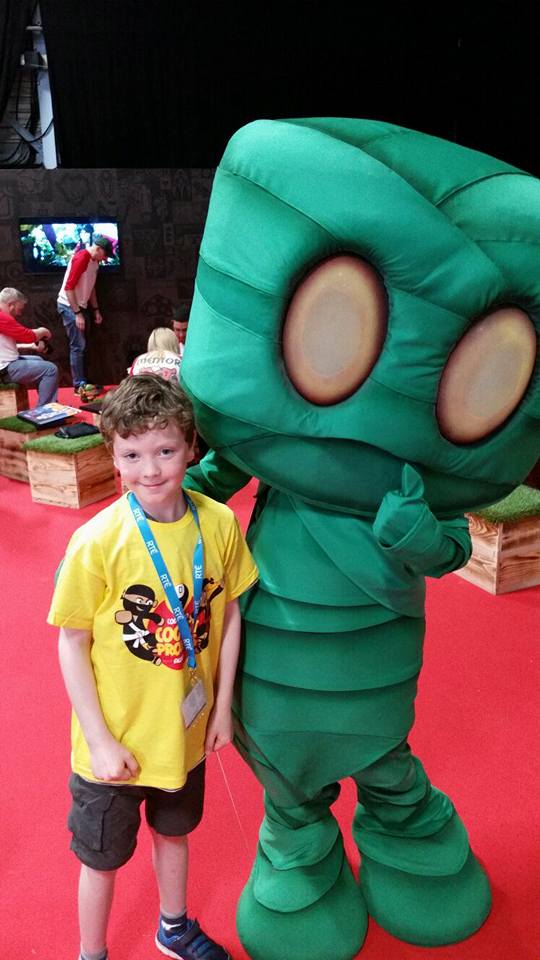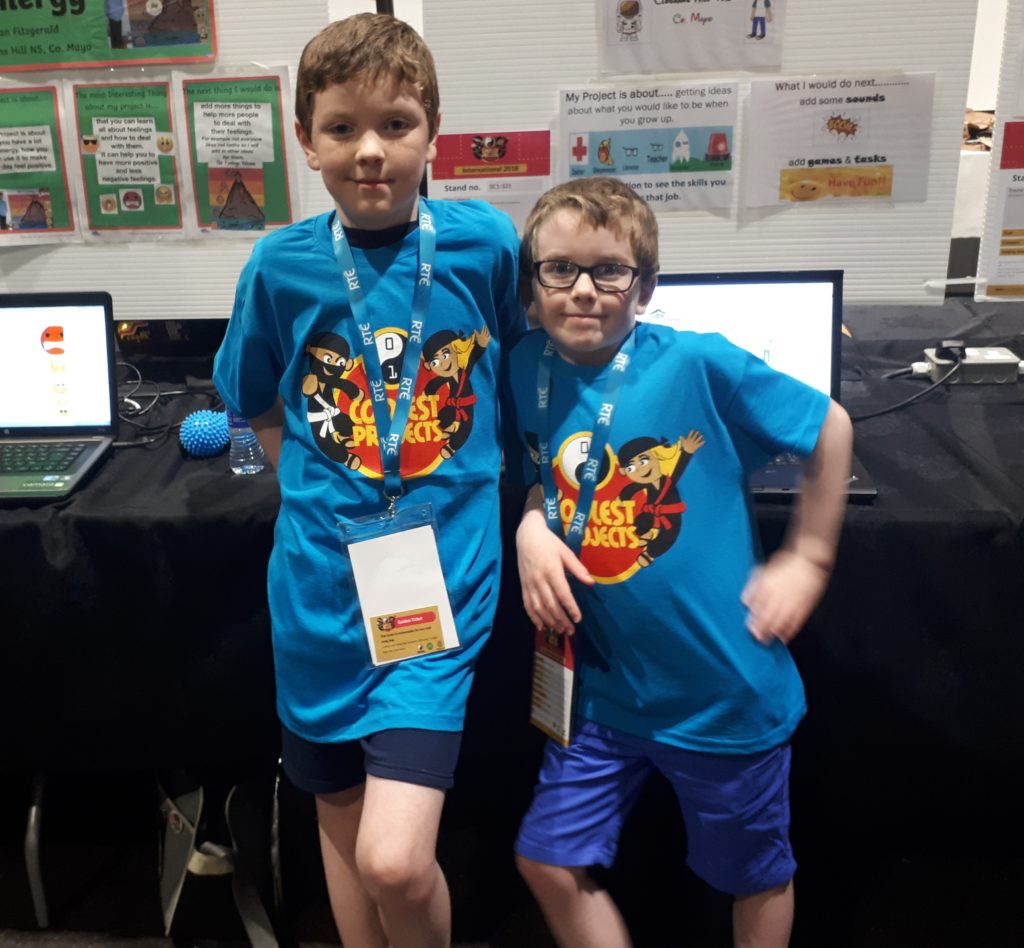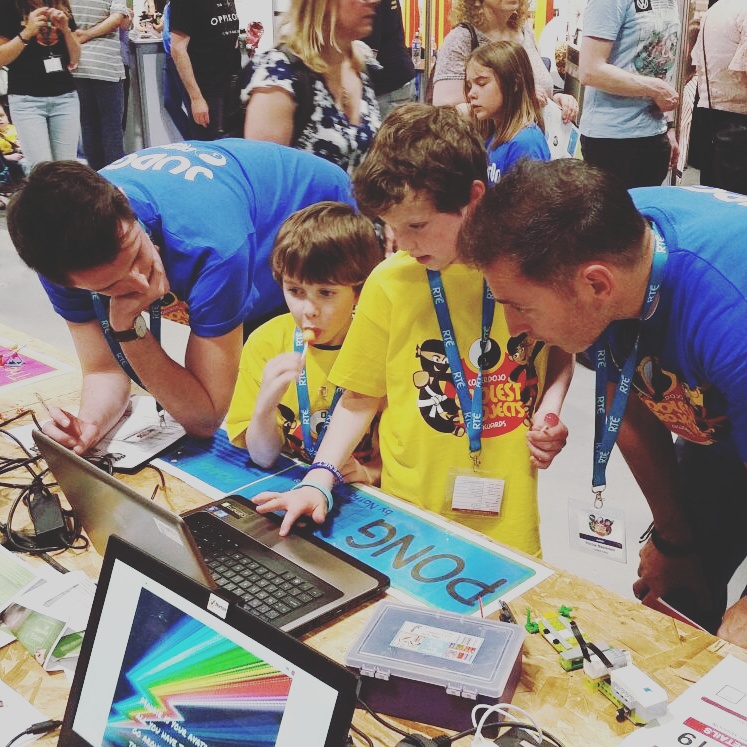By Sandra Fitzgerald
My son began to code in 2016 when he joined the CoderDojo in his primary school, and he has developed a project to bring to Coolest Projects International every year since.
He has autism and is highly sensory, so large, bustling events would always be a challenge for our family. But we never miss this: it will be our third year participating in Coolest Projects International in the RDS this year!
Plenty of space, good organisation, and fun things to do!
The event layout is very spaced out, so you never feel crowded or claustrophobic. The morning registration is well-organised, and you only ever wait a few minutes at most to get your ID lanyard and the all-important Coolest Projects T-shirt.
You also find out which part of the hall you will be exhibiting your project in, and a volunteer will accompany you there if you are unsure of where that is.
Once you have your project set up, you are free to roam around, try out the various projects on display, maybe participate in a workshop, fly a drone, meet a robot, or plonk on the bean bags and listen to some of the speakers onstage.

Chatting to the judges
At registration, you are given a time for judging; before and after that time, you can explore the venue. The waiting around for judging can be especially hard for kids with autism, so come prepared with whatever tricks work for you!
Chatting to the judges is a great confidence booster — they are full of encouragement for what the kids present.
For my son, the anticipation and excitement of showing the judges what he has created
Chatting to the judges is a great confidence booster — they are full of encouragement for what the kids present.
Head to the Quiet Room, or step outdoors
Make sure to find out where the Quiet Room is located — ask a volunteer if you are unsure. Last
It’s great to be able to use it to throughout the day as required if anyone needs some grounding. It’s also easy to step outdoors at any stage: there is plenty of space to have a walk, a hop, a skip, or whatever you need to do to keep regulated.
The final part of the day is the closing ceremony where the prize giving takes place onstage. The kids are gathered in the front rows of the audience, and there’s some fun between them and the presenters. This part can be a tough one for sensory kids who can already be quite unregulated after the day’s excitement.
“My son explained to me once that his mind is organised just like the Scratch blocks he uses in CoderDojo. I think that why he enjoys coding so much: it makes sense to him.”

Last year, when the kids were called to the front-row seats, I could see the burnout setting in on my son’s face, and I knew he wasn’t going to manage all the commotion in the audience or the length of the ceremony. He wanted to stay for some of the ceremony, but I also suspected we would need to make an early exit if it got to be too much for him. We asked one of the volunteers if we could possibly just sit at the very back row, and of course this was no problem. When we did sneak away early, that lovely volunteer (who was using a crutch, I might add) came outside after us to make sure we were OK (I never got your name, but you know who you are, and we haven’t forgotten your kindness).
Coolest Projects encourages all kids
My son explained to me once that his mind is organised just like the Scratch blocks he uses in CoderDojo. I think that why he enjoys coding so much: it makes sense to him.
He has been lucky enough to find his passion and have it nourished by events like Coolest Projects. There are no right or wrong answers here, no one feels ‘different’ or excluded. It’s powered by the most amazing group of people who encourage all our kids to have a go at developing their ideas — the more outside of the box, the better.
